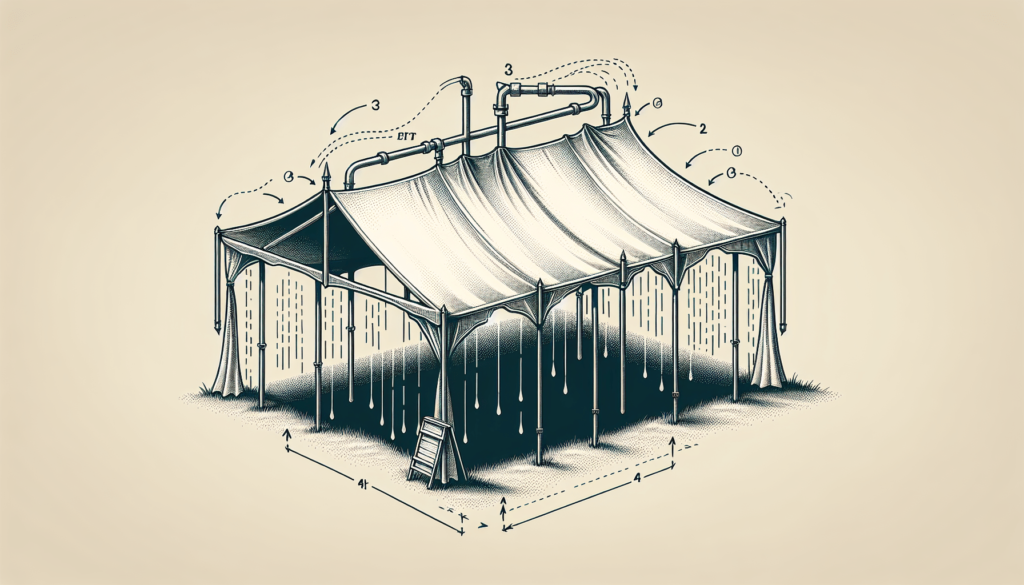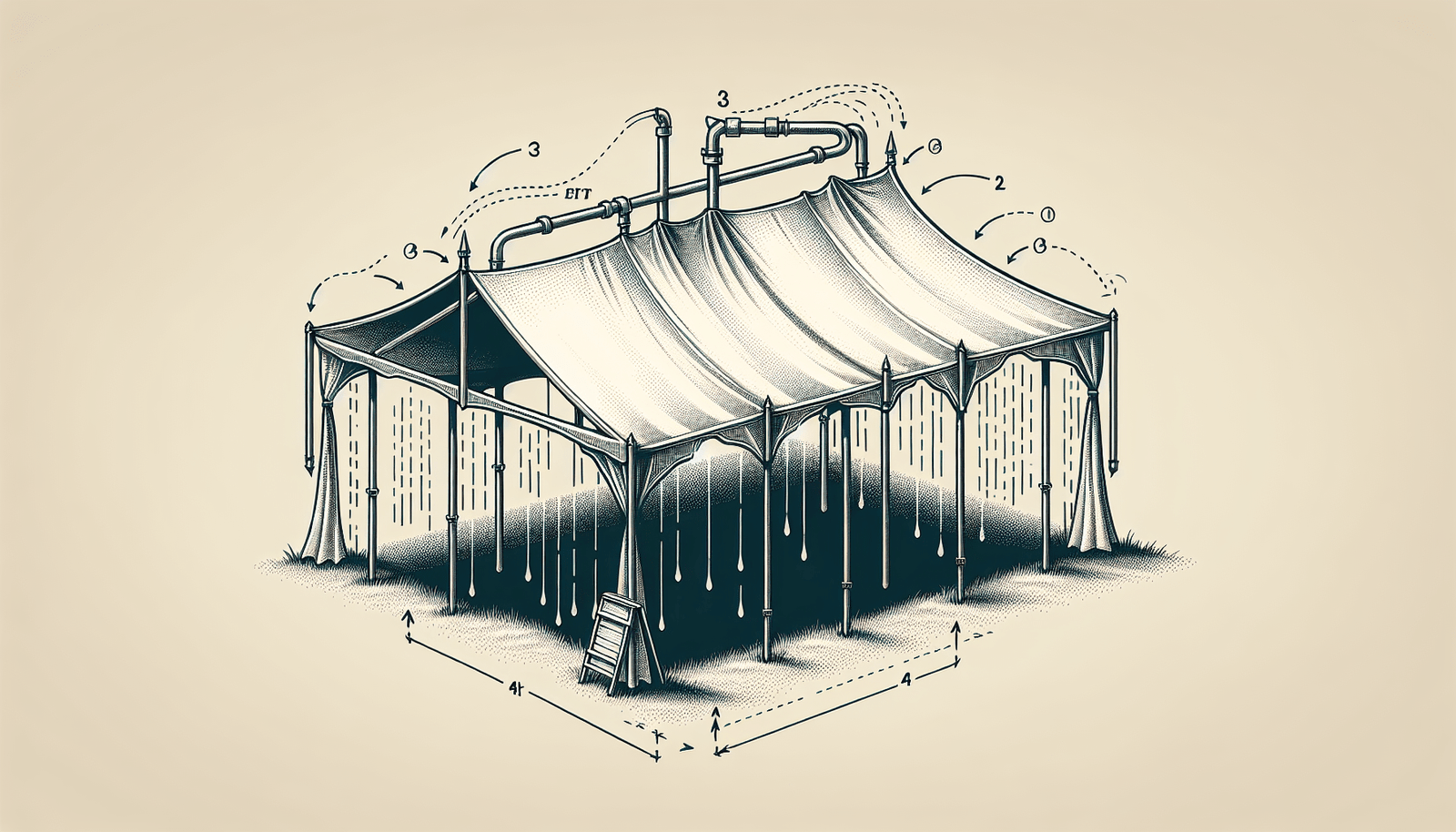How Do I Prevent Water From Pooling On Top Of A Canopy Tent?
Canopy Tent Water Pooling Issues
Have you ever set up a canopy tent for an outdoor event only to find water pooling on top after a rainstorm? This can be frustrating and can potentially damage your canopy tent. In this article, we will discuss various ways to prevent water from pooling on top of a canopy tent, ensuring your outdoor events go smoothly even in inclement weather.
Choosing the Right Canopy Tent Design
The design of your canopy tent plays a crucial role in preventing water from pooling on top. Look for canopy tents with a steep peak or a sloping design. A sloping design allows rainwater to run off instead of collecting on the surface. Additionally, some canopy tents come with built-in drainage systems or gutter systems to redirect water away from the center of the tent. Choosing the right design can significantly reduce the risk of water pooling on top of your canopy tent.

Positioning Your Canopy Tent Correctly
Proper positioning of your canopy tent can also help prevent water pooling issues. When setting up your canopy tent, ensure that it is on a level surface. If the ground is not level, use shims or leveling blocks to create a flat and even surface for your tent. Position your canopy tent in a way that allows rainwater to naturally run off, instead of collecting in one area. Avoid setting up your tent in low-lying areas where water tends to accumulate.
Adding a Tarp or Rain Fly
If you’re concerned about water pooling on top of your canopy tent, consider adding a tarp or rain fly. These additional layers provide extra protection against rain and help redirect water away from the main canopy. Make sure the tarp or rain fly is securely attached to the frame of the tent and extends beyond the edges to guide water off the tent. This simple addition can make a big difference in preventing water pooling issues.

Using a Canopy Tent Weight System
Strong winds can cause your canopy tent to shift or collapse, leading to water pooling issues. To prevent this, consider using a canopy tent weight system. There are various options available, such as sandbags, water weights, or canopy tent weight plates. These weights help anchor your tent in place and prevent it from moving or collapsing during windy conditions. By securing your canopy tent in place, you can reduce the risk of water pooling on top.
Regular Maintenance and Inspections
Regular maintenance and inspections of your canopy tent are essential for preventing water pooling issues. Check for any tears, holes, or damage in the canopy fabric that could allow water to seep through. Repair any damages promptly to maintain the integrity of the canopy. Inspect the frame, joints, and connectors for signs of wear and tear. Proper maintenance ensures that your canopy tent is in good condition and less susceptible to water pooling problems.
Installing Canopy Tent Drains
For a more permanent solution to water pooling issues, consider installing canopy tent drains. These drainage systems are designed to direct water away from the center of the tent and prevent pooling on top. Canopy tent drains can be added during the initial setup or as a retrofit to an existing canopy tent. Consult with a professional to determine the best drainage system for your specific canopy tent model. Installing drains can effectively prevent water accumulation and extend the lifespan of your canopy tent.
Using Canopy Tent Accessories
There are various canopy tent accessories available that can help prevent water pooling on top of your tent. Add-ons such as canopy tent poles, rafter bars, or support braces can provide additional structure and support to your canopy tent. These accessories help distribute the weight of the canopy and prevent sagging, which can lead to water pooling. Additionally, accessories like canopy sidewalls or mesh panels can help protect your tent from rain and wind, reducing the risk of water accumulation.
Monitoring Weather Conditions
Keeping an eye on weather forecasts is essential for preventing water pooling on top of your canopy tent. Be aware of impending rain or storms and take precautionary measures to secure your tent beforehand. If severe weather is expected, consider taking down your canopy tent temporarily to prevent damage. By monitoring weather conditions and being prepared, you can avoid water pooling issues and ensure the safety of your canopy tent.
Conclusion
Preventing water from pooling on top of your canopy tent requires a combination of proper setup, maintenance, and the right accessories. By choosing the right design, positioning your tent correctly, adding extra layers of protection, using weights, and implementing drainage systems, you can effectively avoid water pooling issues. Regular inspections and monitoring of weather conditions are also crucial in maintaining the integrity of your canopy tent. With these tips in mind, you can confidently set up your canopy tent for outdoor events without worrying about water pooling problems.
